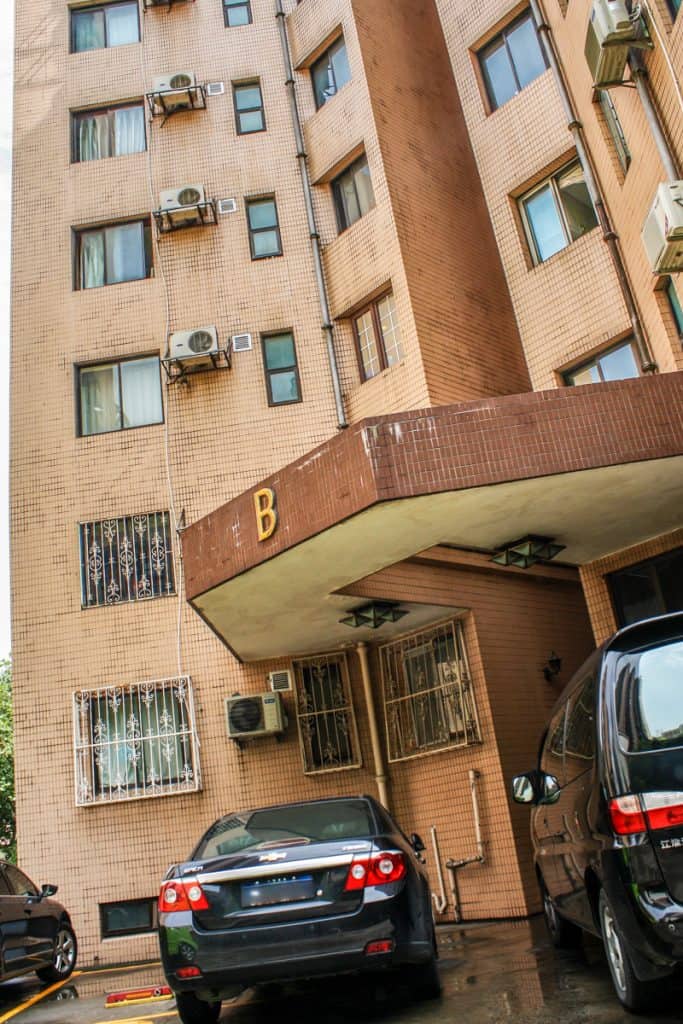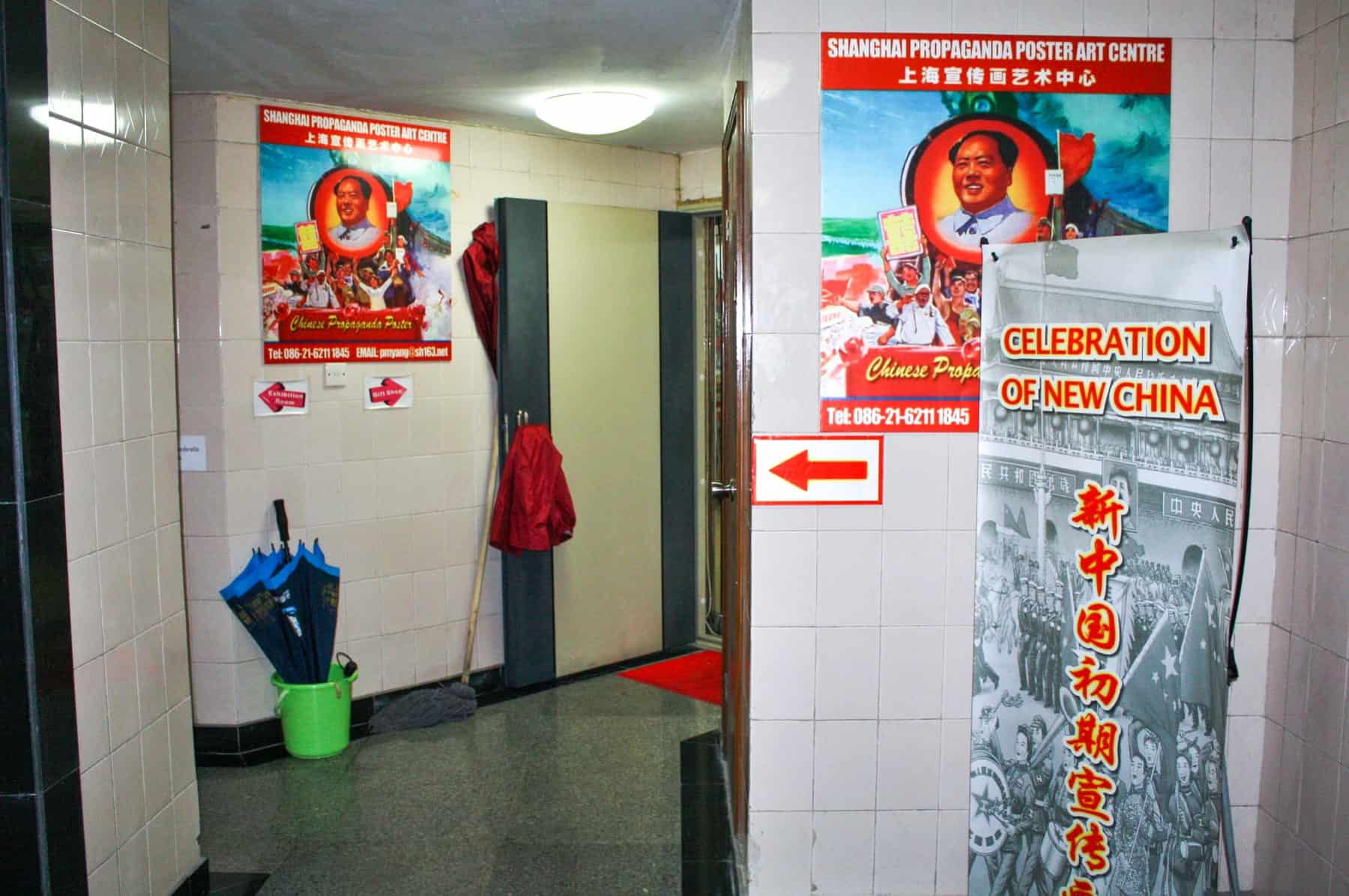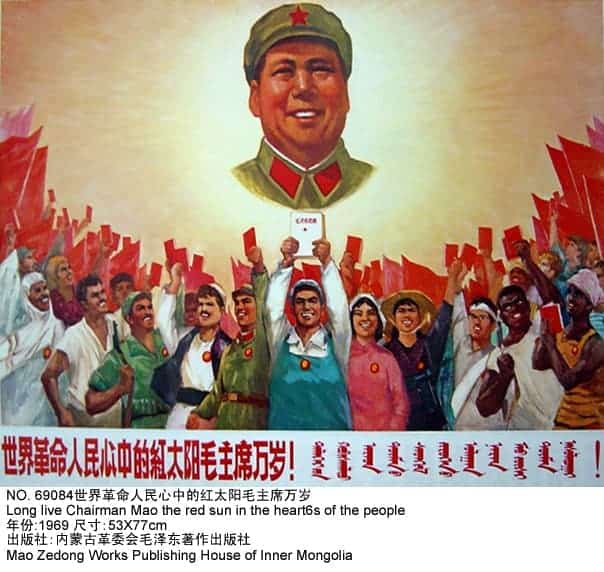Disclaimer: This post contains affiliate links to handpicked partners, including tours, gear and booking sites. If you click through or buy something via one of them, I may receive a small commission. This is at no extra cost to you and allows this site to keep running.
Hidden in an apartment complex basement, the Shanghai Propaganda Poster Art Centre is preserving a history we should never forget.
In Building B at the President Mansion apartment complex on Hua Shan Road is the Shanghai Propaganda Poster Art Centre. A secret Shanghai propaganda museum, dedicated to the preservation of the historical-artistic documents from the Maoist era and a means of education to not forget this period of China’s history.
Propaganda posters and their use in Communist regimes can be especially fascinating. When they say a picture says a thousand words, in this case, they were used to control a nation. A means to suppress the masses, these cleverly designed picture messages are both a timeline of history as well as magnificent works of art.
I had seen the use of propaganda while travelling in North Korea where no advertising or images exist apart from paintings, mosaics and posters shouting revolutionary spirit over struggle. Now, in China, these have been long-lost in the forward-thinking drive to prosperity and are nowhere to be seen. Except for in an apartment basement in Shanghai.

Visiting The Shanghai Propaganda Poster Art Centre
Contents
- Visiting the Shanghai Propaganda Poster Art Centre
- Shanghai Propaganda Museum for Education
- Where did you find the propaganda posters? Did you have to pay for them?
- What did you think when you found so many?
- Was it always your intention to open a museum?
- Do you still look for posters that still exist or have they all been destroyed now?
- What are the thoughts of local people on these posters? Does it upset some people that a turbulent past is displayed?
- Are they allowed, legally, to be displayed? Are there any restrictions on this type of history being shown?
- How important do you think it is to keep this history alive for future generations?
- Further Information
Visiting the Shanghai Propaganda Poster Art Centre
Getting to the Shanghai Propaganda Poster Art Centre isn’t straightforward since it isn’t highly publicised or signposted. Once you arrive at the apartment complex the security guard will usher you in and give you a small credit card-sized piece of paper directing you to the right apartment building.

Shanghai Propaganda Poster Art Centre Block B building that marks the entrance.
You almost feel like you are stumbling upon a secret and the journey to the random basement gives a slightly adventurous feel to the experience.

Basement corridor posters pointing to the Shanghai Propaganda Poster Art Centre.
Inside you’ll find a small gallery that houses thousands of posters from the 1950s, 60s and 70s. Neatly arranged in a timeline, each era includes a historical introduction and background to the poster designs and the styles used to portray the political climate; a journey from the war efforts and the liberation of a new China, the early days of rural collectivisation and the heroic workers of mass industrialisation to the red and black images conveying the shift to a violent and militaristic time.
Shanghai Propaganda Museum for Education
In the modernisation and economic growth of China, these posters were nearly destroyed but were saved by Yang Pei Ming, the Director of the Museum, who decided to put them to positive use as an educational tool to ensure that China’s history is not forgotten. I had the opportunity to speak with him to find out how the posters came into his possession, how his museum came about and his thoughts on showing these historical artefacts to the world.

Copyright: Shanghai Propaganda Art with permission as part of the interview.
Where did you find the propaganda posters? Did you have to pay for them?
I found these posters all over China, but mostly in Shanghai which was the printing centre in China for many years. During the late 1980s and early 1990s (when the planning economy was shifting to a marketing economy), all the propaganda materials including the posters were thrown out from government organisations, museums, libraries and other cultural centres. I was lucky that I had a small amount of money and was familiar with the dealers who were able to supply me with the posters; of course, I paid a good price for those posters to come into my possession.
What did you think when you found so many?
The more posters I collected the more I had a desire to find better ones. Propaganda posters were introduced from the west alongside communist ideas. However, how to make them in a Chinese style was a big challenge for the Chinese poster artist who spent every effort to make them successful and ensure communist ideas were realised in China. The posters capture the human spirit of optimism and the power of industrialism. No other country has produced so many and such beautiful propaganda posters as China did.
Was it always your intention to open a museum?
I’ve found that my collection is the best one in the world – many posters in my collection are the only ones which still exist. I needed a place to showcase them and share their beauty with more people.
Do you still look for posters that still exist or have they all been destroyed now?
It is very difficult to find them now. I did find a couple of pieces in New York last year and some others in Hong Kong a few years ago but most have been destroyed.
What are the thoughts of local people on these posters? Does it upset some people that a turbulent past is displayed?
Different people have different thoughts when they see the posters, just as there are different viewpoints towards the recent Chinese history which is very complicated. My principle is to guide the visitors to view history through an artistic point of view since art, rather than the politics and materialism of the time, lives forever.
Are they allowed, legally, to be displayed? Are there any restrictions on this type of history being shown?
We have obtained the legal and official license to be a private museum of propaganda posters earlier this year. I have never been told by anyone that any of the posters cannot be displayed.
How important do you think it is to keep this history alive for future generations?
No history, in my opinion, has been described in such detail via pictures as the Mao era – this is a unique happening. The history is still something of a mystery and the art that came from that is unbelievable. I feel very proud to have done something nobody has done before which is to provide a visual feast that evokes deep thinking for the coming generations.

Copyright: Shanghai Propaganda Art with permission as part of the interview.
Further Information
Currently, there is no website for Shanghai’s propaganda art centre.
Visit my destinations page for more China travel stories.


BBB says
I absolutely love propaganda posters! Can’t get enough of them. They are especially interesting in areas like China I imagine where tradition plays such a large role. These are fantastic. Great article too!
Nomadic Samuel says
These posters are quite fascinating. When I was in Guilin, China just over a year ago, I witnessed a full on Communist propaganda display at the main city square. It was quite a fascinating performance.